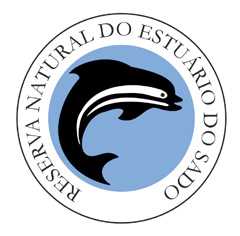Presentation
-
Sado Estuary shows several points of contact between land and water, establishing the transition between the last mountain of the region, the Arrábida mountain, and the plains of Alentejo. A large size formation that includes a section of river, marshlands, low tide and sand banks, salinas - the majority of which deactivated, beaches and coastal dunes as well as plantations, pine woods and agricultural areas. In the Dunas de Troia Botanical Reserve, natural dune ecosystem, there are endemic species with priority character.
The estuary is a nesting and wintering area for numerous birds, namely waders, and is home to the bottlenose dolphin - the only resident cetacean population that uses the estuary as feeding and mating grounds in Portugal - and holds an undeniable ichthyological importance acting as a maternity for several fish species.
Despite scarce population in a significant part of its rim the Sado Estuary Natural Reserve (23.160 ha) holds countless testimonies of past human presence - Roman ovens in Herdade do Pinheiro and the Phoenician Abul factory to which we can add the Roman salt complex situated in the vicinity of Tróia.
-
Instituto da Conservação da Natureza e das Florestas, I.P. (ICNF, I.P.)
-
Estuaries and coastal lagoons
-
Lisbon and Tagus Valley
-
Alcácer do Sal
Grândola
Palmela
Setúbal
Identification and Access
-
Access coming from:
- Setúbal through the N10 heading towards Alcácer do Sal, turn at the "Moinho da Mourisca" sign following the existing indications for 2.8 km until you reach Moinho de Maré da Mourisca;
- Alcácer do Sal, you can enter the south area of the reserve, and you should use the N253 heading towards Comporta and turn right towards Carrasqueira village.
-
Yes
Tip
-
In the Carrasqueira area, on the south shore of the estuary, the occupation based on fishing activities created a building ensemble formed by cabins, houses and warehouses for fishing material, associated with the stilted pier, a restored archaic construction that still functions, as support to the local fishermen. Due to its uniqueness, this site should not be missed. We recommend that you start your visit at the Moinho de Maré Mourisca (closed on Mondays), where you can find all the information available about the area. If you want to see the estuary birds watch the tides.
To observe the fauna (in general) leave early in the morning or a bit before dusk. Bring binoculars and a camera, if you have them. Always pay attention to the weather forecast and avoid performing activities in days of rain, thunderstorm or fog. Avoid going out by yourself, but, if you do, inform an acquaintance or a local entity of your departure and return. Use simple and comfortable clothes. Make outerwear, food, water, sunscreen and/or a raincoat available. You may also want to take a cellphone and flashlight (do not start a fire and don't dispose of cigarette butts incorrectly). Take precautions and use insect repellent. If you wish to observe the cetaceans, this has to be done with companies licensed for that purpose. You can do it any time of the year. However, this activity should be done, preferably, during Spring and Summer, due to the weather conditions. During Summer and Spring, the beaches are also a great place to visit, specially in the Troia peninsula, either from the river side or on the Atlantic side. If you want to enjoy the beaches do not forget your bathing suit. Take special precautions when walking in moist areas, to avoid falling, and do not act in a way that might endanger yourself or others.
In case of an accident contact the emergency service 112.
Supports in place
-
The Reserve has directional and informative signs throughout all of its area.
-
No
-
No
Statutes of Conservation
-
PTCON0011 Estuário do Sado (Sado Estuary)
PTZPE0011 Estuário do Sado
-
RAMSAR Site – Estuário do Sado - List of Wetlands of International Importance
near you
-

Setúbal is located in a prime location, between the Sado estuary and the Arrábida sierra. In addition to the historical heritage, has a riverfront where you can enjoy the diversity of landscapes of its surroundings. (Learn more).
-

Alcácer do Sal, a small town on the right bank of the Sado river, is at a hill top and has a curious castle, that was an important Sado sentinel. (Learn more).
-

Roman village of Santa Catarina de Sítimos, located in the town of Santa Catarina (a few kilometers from Alcácer do Sal). Traces of occupation of two cores, that would integrate an important Roman villa with a large natatio / pool and a staircase, giving access to the interior, probably part of a thermal structure. (Saber mais)
similar
Weather Conditions
What you can do
1. Visit Reserva Botânica das Dunas de Tróia (Botanical Reserve of Tróia dunes), which, at this time of year, presents the most beautiful dune vegetation images in flowering.
2. Using an authorized service provider, take a boat trip to see Sado dolphins.
1. Enjoy the ocean beaches of Tróia, which are worth knowing.
2. Using an authorized service provider, take a boat trip to see Sado dolphins.
1. Visit Herdade da Mourisca and its tidal mill. In autumn, the high tides reach their highest level, so Sado waters near the mill provide unique pictures.
2. In early October, in Herdade da Mourisca, do not miss ObservaNatura, outdoor exhibition dedicated to nature and birdwatching tourism.
3. Using an authorized service provider, take a boat trip to see Sado dolphins.
1. This is a good time for birdwatching in Sado Estuary, it has one of the highest concentrations of shorebirds in the country.
Best Season: All year long
Reserva Natural do Estuário do Sado (Headquarters)
Praça da República
2900-587 SETÚBAL
Telephone: (00351) 265 541 140
E-mail: rnes@icnf.pt







